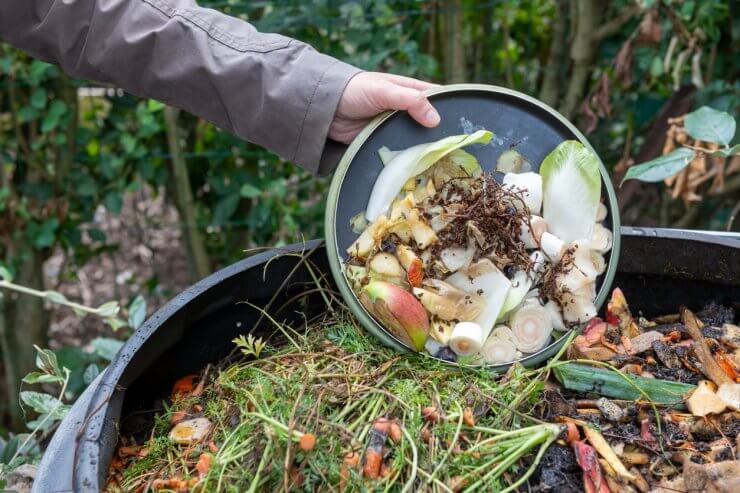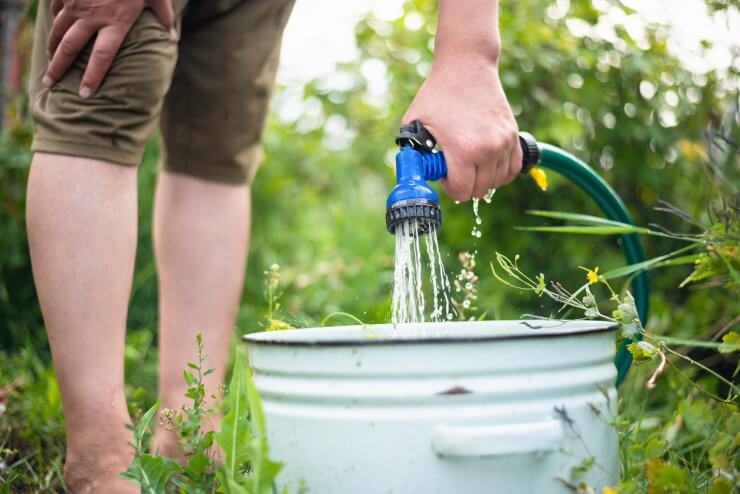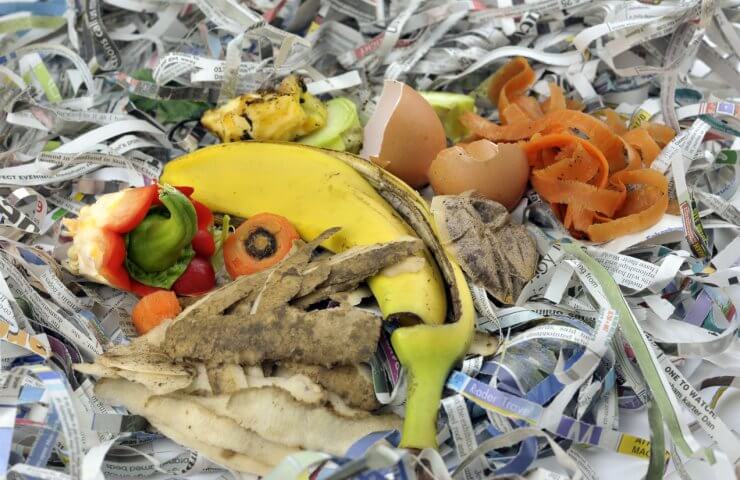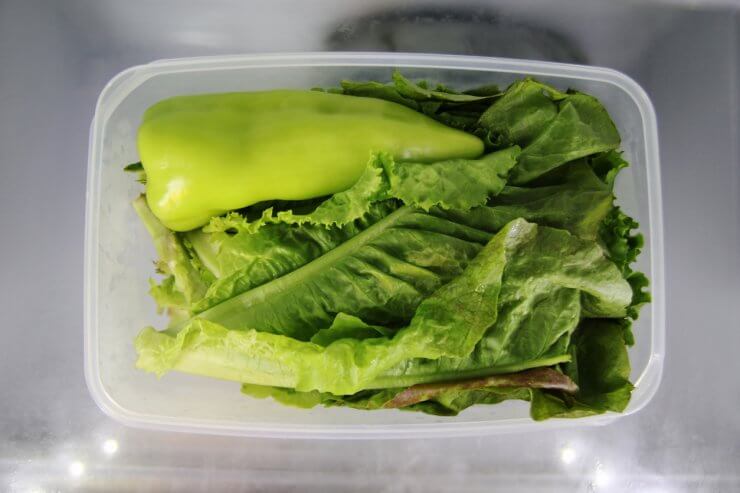
Composting used to scare me. I should say, compost bins used to scare me. I had heard all the great things about composting: that it was a super sustainable and a great cost-effective way of boosting nutrients into your soil. But, I was afraid of the stink of it all. Is it possible to have an odor-free compost bin?
There are so many ways to compost whether you live in an apartment or a big house with a big yard. There are methods for composting that are fully indoors, and others that involve keeping a small compost pail under your sink that you empty into a larger system. No matter the location or method, the most common reason folks don’t try composting is they’re afraid of the smell.
One option is to get yourself a Lomi counter-top composter, which can turn kitchen scraps into compost in a few hours. I have one and I LOVE it. But it has its limits, it fills pretty fast, and it’s no good for bigger jobs like a BBQ with a whole bunch of compostable plates. For everyday stuff though, I am a huge fan. Vitamix makes one too that’s a little cheaper.
But if that’s out of your budget, here are some basic rules and tips I’ve learned along the way going the more traditional composting route, to help you keep an odor-free compost bin in your home!
Discover 7 top tips for growing, harvesting, and enjoying tomatoes from your home garden—when you access the FREE guide The Best Way to Grow Tomatoes, right now!
No meat. No dairy. No exceptions!
When I first started composting, it was tempting to chuck all of my food waste into my compost bin and pat myself on the back, for eliminating food waste. That temptation lasted less than 48 hours when the chicken skin began to rot in the bin under my sink. After airing out my kitchen and scrubbing my compost bin clean, I started over.
Green and Brown Material
The only stuff you should put into you compost bin is green material and brown material. Green material is stuff like fruit and veggie scraps, eggshells, and even a bit of old bread. Brown material is stuff like coffee grounds, dry leaves and grass, and untreated paper (think: unbleached coffee filters, or little bits of corrugated cardboard). In terms of your big compost pile (whether indoors or outdoors) you’ll want the makeup to be 50/50 but some gardeners swear by creating compost that is two times more green material than brown material, others do it the reverse way. A general rule of thumb is that if your compost appears slimy, add more brown material. If it’s too dry, add more green material. And did I mention NO MEAT AND NO DAIRY? Because, don’t!

Wash Your Bins and Pails
Something that helped me re-set after the “chicken skin” incident was scrubbing out my compost bin. If you’re doing the indoor-outdoor method, where you’re keeping a food scraps pail under your sink, it’s a good idea to give it a wash after you dump it into your larger outdoor pile. Even if it looks clean, many odor-causing bacteria are invisible but can build up over time.
Discover 7 top tips for growing, harvesting, and enjoying tomatoes from your home garden—when you access the FREE guide The Best Way to Grow Tomatoes, right now!

Line Your Scraps Pail With Brown Material
Whether you use newspaper or torn up egg cartons, brown material can absorb excess moisture and help contain odor-causing bacteria. This can buy you a little time so you’re not running out to your compost pile every day.

Freeze Your Scraps
If you have room in your freezer, you can stick your scraps pail in there to reduce odors. The freezing temperature kills off bacteria until it’s time to move your scraps into a larger compost pile or bin. This works great for me with onion scraps that tend to stink up my under-sink area.
When getting started with composting, the whole “decomposing of organic materials” thing sounds scary, but if you’re careful about what you actually put into your scraps pail and your compost bin, you’ll be surprised at how non-stinky it can be!
Do you compost? What’s your favorite method for keeping an odor-free compost bin? What have been your successes, or your “Chicken-Skin-Teachable-Moments” along the way? Let me know in the comments!
Note: Food Gardening Network contains links to affiliate websites, including Amazon and Rakuten Affiliate Network, and we may receive a commission for any eligible purchases made by you through links on this page. Any reviews are based on honest reviews of the products.
Discover 7 top tips for growing, harvesting, and enjoying tomatoes from your home garden—when you access the FREE guide The Best Way to Grow Tomatoes, right now!





Great to hear that we need to add brown(paper) to the kitchen bin. All these years of composting and just now realize that shredded paper is a contributor of brown to the compost. I thankyou very much for that.
You can also get indoor compost bins that have a charcoal filter. Works great to eliminate flys and smell.
My understanding is that coffee grounds — despite their color — are actually “green” material in the composting world. It is the coffee filters, rather than the grounds, that are “brown.” So together, they are a great composting combo!
Thank you! My compost is much better now!
Thanks for composting tips — for the last decade or more I keep a worm bin indoors for composting kitchen scraps and coffee grounds with papers but no citrus, no onions or garlic, no meat or dairy. Worms really thrive and the liquid drained off daily is amazing for plants. Egg cartons and strips of newspaper are needed to maintain a good balance.
Outdoors we have 3 compost bins for garden trimmings – vegetable, lawn and flower beds, plus kitchen scraps that would overflow the worm bin.
We keep both worm bin and composters in balance with newspapers (no shiny or coloured pages) and corrugated cardboard.
Meat scraps and bones don’t go in composters but into a “green cone” digester . So far so good for little to no odours even in summer heat.
We have similar set up at cottage except no green cone for meat scraps.
Newspapers have formaldehyde so I use newsprint which has no ink on it.
Thank you for all the tips on composting.